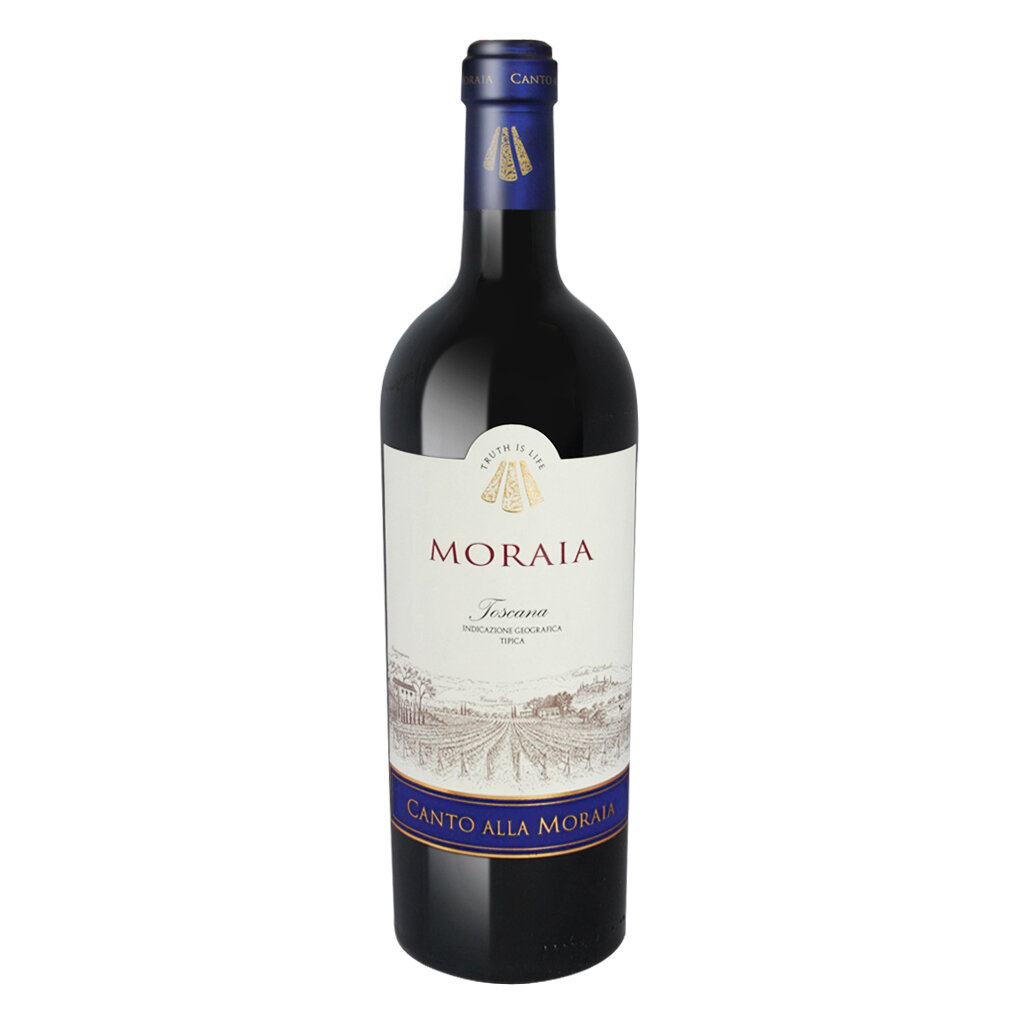Classification: I.G.T. Toscana Rosso. Produced from organic grapes
Grape variety: 50% Cabernet Sauvignon, 30% Sangiovese, 20% Merlot
Exposure: South / South-West
Training system: spurred cordon
Grape yield per hectare: 5,000 kg
Year of planting: 2002-2003
Vinification: meticulous hand-sorting of grapes first in the vineyard and then in the cellar. Destemming and soft crushing of the grapes. Alcoholic fermentation is conducted by indigenous yeasts. Pressing is carried out frequently for optimal fermentation and extraction from the marc. Cold decanting of the wine by natural settling.
Ageing: 12 months in Tonneaux, before spending a minimum of 18 months in the bottle
Drinkability: Up to 10 years
Organoleptic examination: Ruby red in colour. Ample persistent aromas with hints of blackberry and red cherry when young, turning to ripe plum and cherry with ageing, with spicy and vanilla notes characteristic of oak. Soft palate with fine mouthfeel, savoury and with elegant, silky tannins.
Serving temperature: 16-18° C
Format: 750ml/1500ml/3000ml
Alcohol content: 13.5% vol.
Goes well: Classic rich table wine, both with first courses with red and dark sauces and with main courses of roasts, game and mature cheeses.
Classificazione: I.G.T. Toscana Rosso. Prodotto da uve biologiche
Vitigno: 50% Cabernet Sauvignon, 30% Sangiovese, 20% Merlot
Esposizione: Sud / Sud-Ovest
Sistema di allevamento: cordone speronato
Resa uva per ettaro: 5.000kg
Anno di impianto: 2002-2003
Vinificazione: meticolosa cernita a mano delle uve prima in vigna e poi in cantina. Diraspatura e pigiatura soffice delle uve. La fermentazione alcolica è condotta dai lieviti autoctoni. Le follature sono effettuate frequentemente per un’ottimale fermentazione ed estrazione dalle vinacce. Sfecciatura a freddo del vino per decantazione naturale.
Affinamento: 12 mesi in Tonneaux, prima di spendere minimo 18 mesi in bottiglia
Bevibilità: Fino a 10 anni
Esame organolettico: di colore rosso rubino. Profumi ampi persistenti con sentoridi mora e ciliegia rossa da giovane per poi trasformarsi con l’invecchiamento in prugna e ciliegia matura, con note speziate e vanigliate caratteristiche del rovere. Gusto morbido con fine bocca, sapido e con tannini eleganti e setosi.
Temperatura di servizio: 16-18° C
Formato: 750ml/1500ml/3000ml
Grado alcolico: 13,5%VOL
Abbinamenti: classico da tavola ricca, sia su primi piatti con salse rosse e scure sia con secondi piatti a base di arrosti, selvaggina e formaggi stagionati.
Certificazioni: Biologico, Biodinamico dal 2020, certificazione Demeter. Associati ViNnatur

